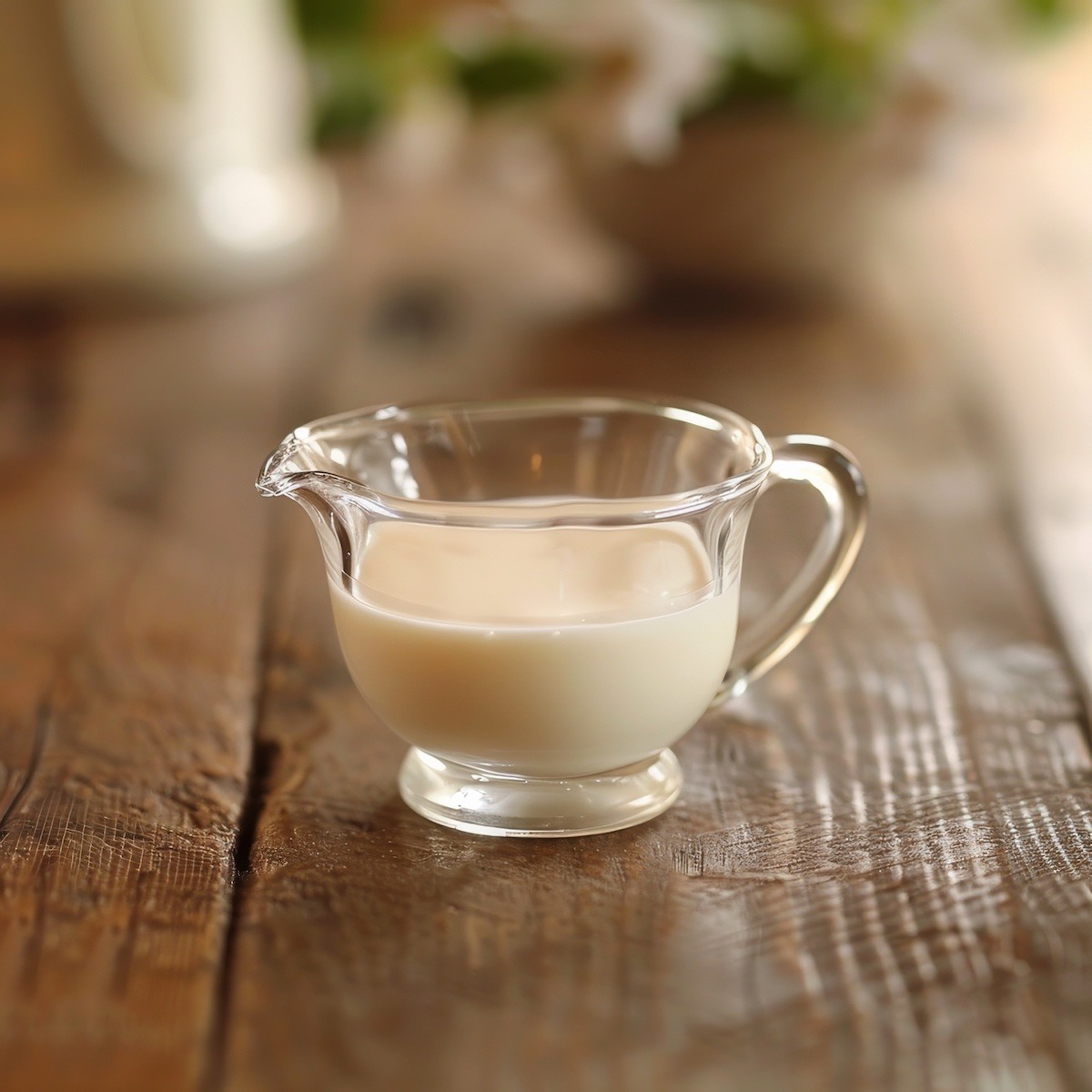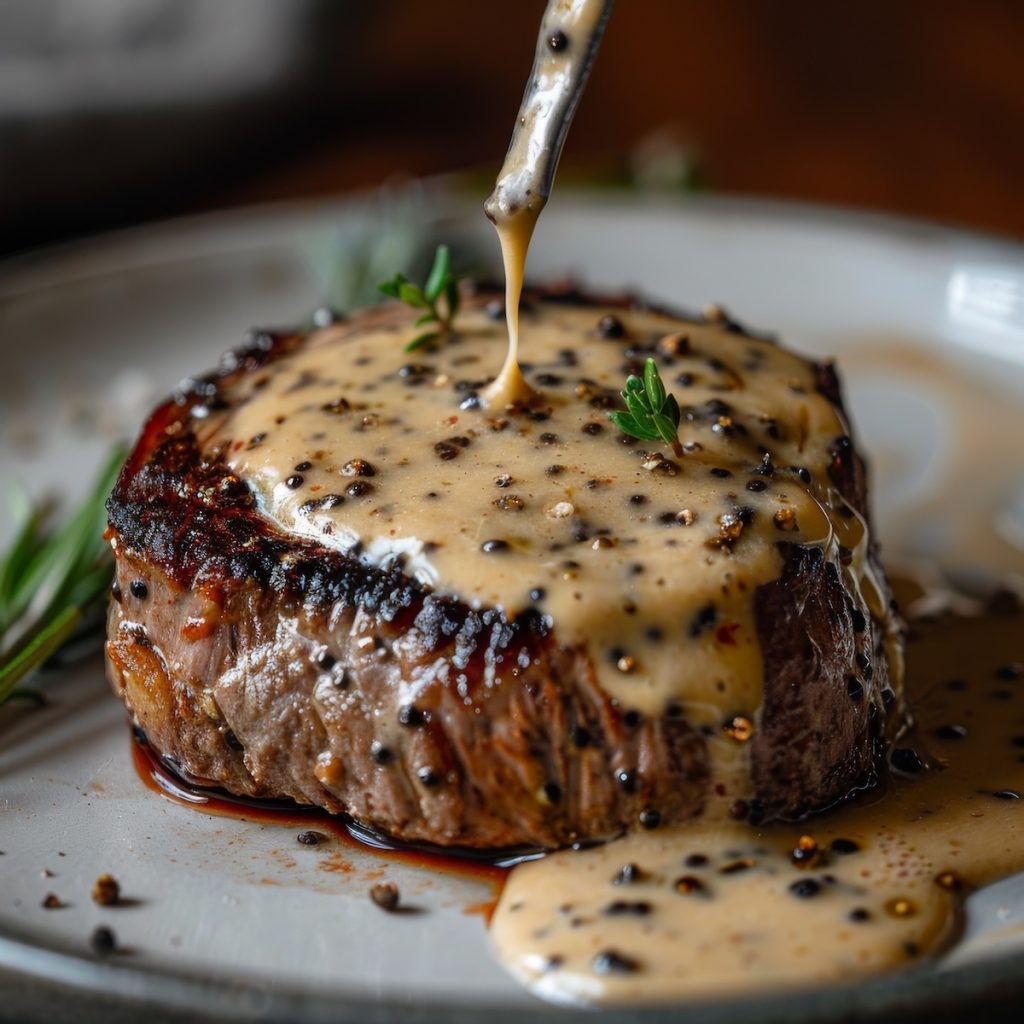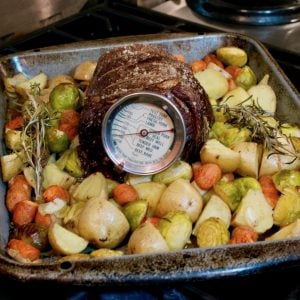Ingredients Chefs Use to Make Restaurant Quality Sauces
The secret to a truly exceptional sauce is carefully selecting and harmoniously blending its ingredients. From the rich, savory notes of a classic Bolognese to the vibrant, tangy zest of chimichurri, its ingredients are the foundation of every great sauce.
These elements define the flavor profile and dictate the texture, aroma, and overall culinary experience. High-quality ingredients ensure depth and complexity, transforming a simple dish into a gourmet delight.
For example, fresh herbs, ripe tomatoes, aged cheeses, and premium olive oil contribute unique characteristics that elevate the sauce to new heights. Understanding the role of each ingredient allows chefs and home cooks alike to create balanced, nuanced sauces that complement and enhance their accompanying dishes.
Moreover, the provenance and seasonality of ingredients can introduce subtle variations, offering a taste of a particular region or time of year. By appreciating the importance of ingredients, one can master the art of sauce-making, achieving consistency and excellence in every creation. This article delves into the critical role ingredients play in the success of sauces, providing insights and tips for selecting the best components to craft unforgettable culinary masterpieces.
Fresh Ingredients Are Always Better
Fresh ingredients are fundamental to creating exceptional sauces, bringing many benefits that enhance flavor, texture, aroma, and nutritional value. Here are several ways in which fresh ingredients contribute to the success of sauce-making:
- Superior Flavor: Fresh ingredients possess vibrant, natural flavors that are more intense and complex than their processed or preserved counterparts. This freshness translates into sauces with a more vivid and dynamic taste profile, allowing the true essence of each ingredient to shine.
- Enhanced Aroma: The volatile compounds in fresh herbs, spices, and vegetables are at their peak, providing a more potent and appealing aroma. This aromatic quality is crucial in sauce-making, as the scent significantly contributes to the overall sensory experience of a dish.
- Improved Texture: Fresh ingredients contribute to sauces’ desirable texture. For instance, fresh tomatoes balance juiciness and pulp, fresh herbs add a slight crunch and vibrant color, and fresh dairy products ensure a smooth, creamy consistency.
- Nutritional Value: Fresh ingredients retain more vitamins, minerals, and antioxidants than processed ones. Using fresh produce, herbs, and dairy in sauces enhances flavor and adds nutritional benefits, contributing to a healthier dish.
- Visual Appeal: The natural colors of fresh ingredients are more vibrant and appealing, making the sauce visually attractive. Bright greens from fresh herbs, deep reds from ripe tomatoes, and golden hues from fresh dairy can elevate the presentation of the sauce.
- Seasonality and Authenticity: Using fresh, seasonal ingredients can imbue sauces with authentic, regional flavors. Seasonal produce is often more flavorful and affordable, allowing cooks to create sauces that reflect the time of year and local cuisine.
- Versatility and Creativity: Fresh ingredients offer greater versatility and inspire creativity in the kitchen. Cooks can experiment with different combinations and quantities, adjusting flavors and textures to achieve the perfect sauce for any dish.
- Chemical-Free and Natural: Fresh ingredients are typically free from preservatives, additives, and artificial flavors, resulting in a cleaner, more natural taste. This purity ensures the sauce’s flavor is unadulterated and true to its ingredients.
Incorporating fresh ingredients into sauce-making ensures the final product is rich in flavor, aroma, and nutrients. This practice enhances the culinary experience and promotes a connection to food’s natural, wholesome qualities.
Cooking with Demi-Glace
Demi-glace is a cornerstone of classic French cuisine, revered for its rich, deep flavor and luxurious texture. This concentrated sauce, made by reducing brown stock and espagnole sauce, is a versatile base for many dishes, enhancing them with its robust taste and glossy finish. Here are several ways demi-glace contributes to the success of sauces:
- Intense Flavor Concentration: Demi-glace offers an intense, concentrated flavor, providing a complex and savory foundation for other sauces. Its deep umami notes come from the slow reduction of brown stock, often made from veal bones, which are simmered to extract maximum flavor.
- Thickening Agent: Due to its gelatinous nature from the collagen in the bones, demi-glace acts as a natural thickening agent, giving sauces a smooth, velvety consistency. This thickness adds body to the sauce, making it cling beautifully to meats and vegetables.
- Versatility: Demi-glace can be used as a base for various sauces, such as Bordelaise, Madeira, and peppercorn sauce. Its versatility allows it to enhance various dishes, from steaks and roasts to vegetables and pasta.
- Balanced Flavor Profile: The reduction process of demi-glace balances the flavors, combining the rich, meaty taste with subtle sweetness and acidity from added aromatics like onions, carrots, celery, and tomatoes. This balance creates a harmonious taste that can complement and elevate the flavors of the main dish.
- Aromatics Enhancement: Adding aromatics like garlic, thyme, and bay leaves during the reduction process infuses demi-glace with layers of nuanced flavors. These aromatics enhance the overall profile of the sauce, adding depth and complexity.
- Professional Finish: Using demi-glace gives dishes a professional touch, providing a restaurant-quality finish to home-cooked meals. Its luxurious texture and rich flavor can transform simple dishes into gourmet experiences.
- Longevity and Storage: Demi-glace can be made in large batches and stored for future use. It freezes well, allowing cooks to have a high-quality, flavorful base on hand that is ready to be incorporated into various recipes.
By incorporating demi-glace into sauce-making, chefs and home cooks can achieve a level of depth and sophistication that elevates their culinary creations and brings out the best in the dishes they prepare.
Cooking with Alcohol
Alcohol is a powerful tool in sauce-making, enhancing flavor in several ways. When used correctly, it can elevate a sauce by adding depth and complexity that might be difficult to achieve with other ingredients alone.
- Solvent Properties: Alcohol acts as a solvent, helping to dissolve both water-soluble and fat-soluble flavor compounds. This ability means it can extract and concentrate flavors from herbs, spices, and other ingredients, creating a more robust and nuanced profile in the sauce.
- Aromatics Release: Alcohol can help release and intensify the aromas of the ingredients. Since much of what we perceive as taste comes from our sense of smell, this enhancement makes the sauce more aromatic and flavorful.
- Caramelization and Browning: When alcohol is used in cooking, it can help deglaze a pan, lifting the flavorful browned bits (fond) from the bottom. This process adds depth to the sauce and incorporates the complex flavors developed during caramelization and browning.
- Balance and Contrast: Alcohol can introduce subtle acidity and sweetness, which can help balance other flavors in the sauce. For instance, wine can add acidity to balance fatty or rich components, while spirits like brandy can introduce sweet caramel notes.
- Evaporation: During the cooking process, much of the alcohol evaporates, leaving behind only the flavor compounds. This evaporation concentrates the flavors without leaving a strong alcoholic taste, ensuring the sauce is rich and flavorful rather than overpowering.
Understanding how alcohol interacts with other ingredients and flavors can help cooks use it effectively to create well-rounded, delicious sauces that enhance the overall dining experience.
Cooking with Shallots
Shallots are a prized ingredient in sauce-making, known for their unique flavor profile and versatility. They are part of the allium family, including onions, garlic, and leeks, but they offer a more delicate and refined taste than their relatives. Incorporating shallots into sauces can enhance the dish in several ways:
- Mild and Sweet Flavor: Shallots provide a mild, slightly sweet flavor with subtle hints of garlic, making them an excellent choice for sauces with a more gentle onion-like taste. This nuanced flavor can enhance the overall complexity of a sauce without overpowering other ingredients.
- Aromatic Base: Shallots are often used as a foundational aromatic in many classic sauces. When sautéed, they release a fragrant aroma that forms a flavorful base, creating depth and richness in the sauce.
- Versatility: Shallots are incredibly versatile and can be used in various sauces, from creamy to vinaigrette to reduction sauces. Their adaptable nature allows them to complement a wide range of ingredients, whether in a delicate beurre blanc or a robust red wine reduction.
- Textural Element: Shallots can add a pleasing textural element to sauces depending on how they are prepared. Finely minced shallots can blend smoothly into a sauce, while thinly sliced shallots provide a slight crunch and visual appeal.
- Caramelization Potential: When cooked slowly, shallots can caramelize beautifully, adding a sweet, rich depth of flavor. This caramelization is particularly beneficial in sauces that balance savory and sweet notes.
- Nutritional Benefits: Shallots are also packed with vitamins, minerals, and antioxidants, contributing not only to the flavor but also to the nutritional value of the sauce.
Incorporating shallots into your sauce-making repertoire can significantly elevate your dishes, providing a sophisticated and multifaceted flavor that enhances the overall culinary experience.

More Ingredients for Great Sauces at Home
Cooking with Flavor Enhancers
One of the differences between restaurant chefs and home cooks is that chefs are familiar with a wide variety of specialty ingredients that can subtly or not-so-subtly enhance a sauce. They understand the diner’s palate, the flavors that tongues can taste, and the myriad scents that combine with those main tastes to produce complex flavors.
The basic tastes the human tongue can distinguish are sweet, salty, sour, bitter, and umami. Umami is the fifth taste, isolated and defined by Japanese scientists, and can be described as meaty/savory/mouth-watering.
While most of us can think of ways to play up the first four flavors using sweeteners, salts, vinegar, and citrus juices, chefs are masters of highlighting the more elusive umami taste using some secret ingredients:
- Mushrooms: Varieties like shiitake, porcini, and portobello are rich in glutamates, contributing to umami. Dried mushrooms are particularly potent.
- Soy Sauce: Made from fermented soybeans, soy sauce is a concentrated source of umami, adding a salty, savory depth to sauces.
- Tomatoes: Especially sun-dried or slow-roasted tomatoes have high levels of glutamates, which give them a sweet, tangy umami flavor.
- Parmesan Cheese: Aged cheeses like Parmesan are rich in umami, adding a savory, nutty taste to sauces.
- Anchovies: These small, oily fish are packed with umami and can be melted into sauces to provide a deep, savory flavor without a strong fishy taste.
- Fish Sauce: A staple in many Asian cuisines, fish sauce is made from fermented fish and adds a strong umami punch.
- Miso Paste: Made from fermented soybeans, miso paste is a concentrated source of umami and can add a complex, savory depth to sauces.
- Worcestershire Sauce: This sauce contains anchovies and other umami-rich ingredients, making it a flavorful addition to many sauces.
- Dashi: A Japanese stock made from kombu (seaweed) and bonito flakes (dried fish), dashi is a robust umami sauce base.
- Beef or Veal Stock: Rich in gelatin and glutamates, homemade or high-quality commercial stocks add a deep, savory, umami flavor.
- Nutritional Yeast: Often used in vegan cooking, nutritional yeast provides a cheesy, nutty, umami flavor to sauces.
- Cured Meats: Prosciutto, bacon, and other cured meats are rich in umami, adding depth and a savory richness to sauces.
- Seaweed: Varieties like kombu and nori are high in glutamates and can enhance the umami flavor in sauces.
- Black Garlic: Fermented garlic with a sweet, molasses-like flavor rich in umami.
- Fermented Soy Products: Ingredients like tempeh and natto, made from fermented soybeans, are rich in umami and can add depth to sauces.
Using these umami-rich ingredients in sauce-making can create a more complex, satisfying, and intensely flavorful final product.
Sauce Thickeners
Cooking With A Roux
A roux is a classic culinary technique used as a thickening agent for sauces, soups, and stews. It is made by cooking equal parts of fat (usually butter) and flour until they form a smooth paste. The cooking process helps remove the flour’s raw taste and develop the roux’s flavor.
Depending on the desired outcome, the roux can be cooked in different stages: white, blonde, or brown. A white roux is cooked briefly with a mild flavor, perfect for creamy sauces like béchamel.
A blonde roux is cooked slightly longer to develop a light tan color and a nutty flavor, often used in velouté sauce. A brown roux is cooked until it reaches a deep brown color, providing a rich, robust flavor ideal for dishes like gumbo. The roux’s versatility and ability to create a smooth, velvety texture make it a fundamental element in many classic recipes.
Cooking With A Slurry
A slurry is a simple, effective method for thickening sauces, soups, and stews. It is made by mixing starch, such as cornstarch, arrowroot, or flour, with a cold liquid, usually water or broth, until it forms a smooth, lump-free mixture. This combination is then gradually added to a hot liquid while stirring continuously. As the mixture heats, the starch granules swell and gelatinize, thickening the liquid to the desired consistency.
One key advantage of using a slurry is its ease of preparation and the ability to adjust the thickness of a dish quickly and precisely. Additionally, slurries are often preferred when a clear, glossy finish is desired, as they do not cloud the liquid like other thickening agents. Slurries are versatile and can be used in savory and sweet dishes, making them a valuable tool in the kitchen.
Using Starchy Foods
Starchy foods are excellent natural thickeners for sauces, providing a smooth, velvety texture. When starchy foods like potatoes, rice, pasta, or grains are cooked, their starch molecules absorb water and swell, releasing a gel-like substance that thickens the liquid around them.
For example, adding mashed potatoes or rice to a sauce can create a hearty, creamy consistency. Similarly, cooking pasta or grains directly in a sauce allows the released starch to blend in, thickening the sauce as it simmers.
Cornstarch and flour are often used in a more refined form. A slurry, made by mixing cornstarch with cold water, can be added to a simmering sauce to thicken it quickly. A roux, a mixture of flour and fat cooked together, can also be used as a base for many classic sauces. These starchy ingredients are versatile and can adapt to various culinary needs, enhancing the sauce’s body and flavor.
Using Eggs
Eggs are a versatile and effective thickening agent for sauces, contributing both richness and a smooth, creamy texture. The proteins in eggs coagulate when heated, which helps to thicken the sauce. However, using eggs requires careful temperature control to avoid curdling or scrambling. Here are some key points about using eggs to thicken sauces:
- Custard-Based Sauces: Egg yolks are commonly used in custard-based sauces like crème anglaise or pastry cream. The yolks provide a rich, velvety texture and add a luxurious mouthfeel.
- Tempering Technique: To incorporate eggs into a hot liquid without curdling, a technique called tempering is used. This involves slowly whisking a small amount of the hot liquid into the beaten eggs to gradually raise their temperature before adding them back into the main mixture.
- Emulsification: Eggs, particularly egg yolks, are excellent emulsifiers. They can help bind and thicken sauces like hollandaise or mayonnaise, creating a stable, smooth consistency.
- Whole Eggs: Whole eggs can also be used in certain sauces, providing thickening and a light, airy texture. For example, whole eggs are beaten and gently cooked to achieve the desired thickness in some dessert sauces or light custards.
- Heat Sensitivity: When using eggs to thicken sauces, it’s crucial to cook them gently over low to medium heat, stirring constantly to prevent the eggs from cooking too quickly and forming lumps.
Eggs are a valuable tool in sauce-making. They offer thickening properties and a rich, creamy texture that can elevate a dish’s overall quality.
Using Beurre Manie
Beurre Manié, French for “kneaded butter,” is a classic technique for thickening sauces and soups. It consists of equal parts of softened butter and flour kneaded together into a smooth paste. This mixture is whisked or kneaded into a hot liquid, such as broth or sauce, to thicken it.
Key characteristics and uses of Beurre Manié include:
- Instant Thickening: When added to a hot liquid, Beurre Manié provides an instant thickening effect. Unlike a roux, which requires cooking, Beurre Manié disperses quickly and thickens almost immediately upon incorporation.
- Flexibility: It offers flexibility in adjusting the thickness of a sauce or soup. Additional Beurre Manié can be added gradually until the desired consistency is achieved.
- No Cloudiness: Unlike other starch-based thickeners, Beurre Manié does not cloud the liquid, resulting in a clear, glossy finish.
- Texture and Flavor: When properly incorporated, Beurre Manié adds a subtle richness and smoothness to sauces without significantly altering their flavor profile.
- Versatility: It can be used in various dishes, from classic French sauces like velouté or béchamel to gravies and soups, providing a velvety texture and enhancing the overall mouthfeel.
Beurre Manié is a handy technique for home cooks and chefs alike. It offers a quick and effective way to perfect the consistency of sauces and soups.
Using Cream

Cream is a luxurious and versatile ingredient widely used in sauce-making to enrich, thicken, and add a velvety texture to dishes. Here are several ways cream enhances sauces:
- Richness and Depth: Cream contributes a rich, smooth texture and adds depth of flavor to sauces. Its high-fat content creates a silky mouthfeel that enhances the overall eating experience.
- Thickening Agent: Due to its natural thickness, the cream can thicken sauces without needing additional starches or roux. When heated gently, it simmers down to a thicker consistency.
- Emulsification: Cream helps emulsify ingredients in sauces, ensuring a stable and cohesive mixture. This is particularly evident in creamy pasta sauces and dressings.
- Balancing Flavors: Cream can balance and mellow out stronger flavors in sauces, such as tomato acidity or tanginess from certain cheeses, creating a more harmonious taste profile.
- Versatility: Cream is incredibly versatile and suitable for savory and sweet dishes. It can be used in classic sauces like Alfredo or stroganoff, soups like cream of mushroom, and desserts such as crème anglaise or pastry cream.
- Texture Enhancement: Cream adds a luxurious, glossy finish to sauces, making them visually appealing and delicious.
- Heat Sensitivity: Cream must be heated carefully to avoid curdling. Lower heat and gradual incorporation into hot liquids help maintain its smooth texture.
Incorporating cream into sauce-making brings a touch of indulgence and refinement, transforming ordinary dishes into extraordinary culinary experiences. Its ability to enhance flavors, provide texture, and offer versatility makes it a staple in kitchens worldwide.















One Response
Thanks for sharing another awesome recipe as always! Been a long time reader and I found all your recipes wonderful. Tried a few of them as well but not as deliciously looking like yours. Keep up the great work!